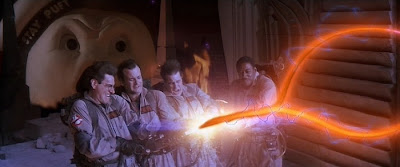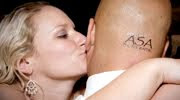About a year and a half ago I posted this blog entry about a back door trick I found online that allows you to access Adobe Lightroom catalog files across a Network. This includes accessing them on a NAS (Network Attached Storage) or on another system on you network.
Well, I am here to tell you that we have had NO problems with it even after upgrading to version 3 and IT WORKS AWESOME!!
So before you read on, keep in mind that the instruction you are about to see here below amount to nothing more than writing a one or two line text file in Microsoft Notepad and including a shortcut to it in your start-up folder. We just broke it down as much as we could so it would be easy to follow.
So when we first started using this, I had some apprehensions as I was really worried about the potential for damaging a Catalog file when, inevitably, we would mistakenly try to simultaneously access a catalog file. When I first wrote this blog entry, I deemed this "CROSSING THE STREAMS"

Well, it did in fact happen to us and the only ill affect was that it did not open for the second user. Gail had a catalog file open on her system that I was also trying to access from mine. After waiting several minutes and not seeing it open on my system, I realized what was happening. So it looks as though Adobe already had some means of locking multiple users out of trying to access the same cat file.
So, why did we want this?
The problem Gail and I had was that in our small home Network, we always had an issue with me keeping the Lightroom catalog files local to my system. Granted I do 95% of the initial editing so it made sense, but the problem always came up when she needed to re-export files or modify images for the customer but, she did not have access to it. Previously this meant she had to interrupt what I doing and/or kick me off of my work station.
This is the plight of many Lightroom users and I think everyone would agree this is the last big step Adobe needs to take with LR.
One thing to note...
Anything you do to your system is YOUR responsibility. This is why I handed to our experienced tech.
That said, all the instructions you see here below amount to nothing more than writing a one or two line batch file and including a shortcut to it in your start-up folder. Our tech considers it pretty much harmless.
STEP 1
On the PC hosting the cat file...
If you plan to access a catalog file on another computer or a hard drive connected to another computer, it must be first shared under the properties tabs and also check "Allow users to change my files" otherwise Lightroom will fail to open from the remote system.
STEP 2
Go to the computer that you will be remotely accessing the LR catalog file from and obtain the actual network address for where the catalog files are located. Do this by opening the "My Network Places" window from the remote workstation and be sure to right click and use the "View Details" view. Looking at the below graphic, you can see that in our case "\\d63rgzc1\current lr work" is my system address followed by the specific folder I will be sharing with her over the network and “\\drobo-fs\asa-network” is our Drobo-FS (NAS system). We will be "mounting" both of these network locations as local to Gail's works station as far as Lightroom is concerned.

STEP 3
In Notepad, open a new file and save it as "Start.bat".
Using those addresses you located in the above step, create a command line in the "Start.bat" file for each of the drive(s)/network locations you would like to access that has your catalog files (might be only one in your case).

The “subst L:” command tells the computer to substitute/create a drive named “L” as a local address letter on that PC which points to "//d63grzc1/current LR work" which is the folder on my system where I keep the catalog file that Gail needs to access. The "subst S:" command does the same thing but to a Drobo network attached storage unit on our office network.
Once you are done with that, save the “Start.bat” file in the “All Users” folder of that workstation (see below).

STEP 4
Then you want to create a shortcut of this file (right click, create shortcut) as seen below.


STEP 5
Rename this shortcut to something you might recognize or mistake for a virus as we did. In this case (below) we renamed the shortcut “Map Drobo Drive” just so we know not to scrub by accident thinking it was malicious. You can name it anything you want.

STEP 6
Drag and drop this shortcut into your Startup folder. “C:\Documents and Settings\All Users\Start Menu\Programs\Startup” folder (as seen below). This will now run upon system start-up.

After which that drive(s) might start showing up as they did for us as "Disconnected Network Drive" (below). That is just the way they are going to show up, disregard it. Renaming it won't work as each time you reboot the computer it will most likely reset.

FINISHED!!
NOW REMEMBER! From this point on, whenever you are trying to access a catalog file remotely make SURE that you are pointing to the correct drive. Notice (below)how these drives now show up under “My Computer" and NOT “My Network Places”. This is important. If you try to access the same catalog file through "My Network Places", Lightroom will not allow it.






